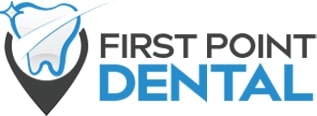Scared of the Dentist?
Terrified of the dentist? Have no Fear! According to the Dental Organization for Conscious Sedation 30% of Americans avoid the dentist due to fear. Sedation dentistry (also referred to as sleep dentistry) allows patients that previously avoided the dentist altogether out of fear or a desire to avoid discomfort, get the dental treatment they need. It involves the use of numbing agents to relax the patients throughout dental procedures. The sedation can be provided for everything from dental surgeries to professional dental cleaning. But the way it is used depends upon how distressing the situation has become for the patient. Oral conscious sedation continues to rise in popularity as more and more patients learn about the anxiety free benefits of this type of treatment.

Sedation dentistry may be appropriate for individuals who:
- Experience a bad gag reflex
- Possess teeth highly sensitive to hot and cold temperatures
- Have a low pain tolerance level
- People who are anxious or fidgety in the dentist’s chair
- Requires lengthy dental treatment or completion of a large amount of dental work.
Top Benefits of Sedation Dentistry:
- A more relaxed experience
- Increased comfort as you will not feel anything
- Gag reflex – don’t even worry about it.
- Little or no memory of the treatment – it’s like it didn’t happen.
How will I be sedated?
The levels of sedation that can be used based on the patient need to include:
- Oral Sedatives: These are prescribed anti-anxiety medications that are given prior to treatment. They are a form of minimal sedation which keeps the patient awake and relaxed during the invasive dental procedure as well as responsive to any verbal commands.
- IV Sedation: This involves the administration of an injection of local anesthetic through a vein by the dentist at the time of the procedure. It is considered conscious sedation (a moderate form of sedation) or sometimes called twilight sedation. After receiving this sedation, the patients may feel as if they are in a dream-like state of relaxation and may not have a memory of much of the procedure.
- Nitrous Oxide (a laughing gas): It is an inhalation sedative that induces relaxation. When combined with the sedative agent(s), this gas may provide the patient with mild, moderate, or deep sedation or even general anesthesia depending upon its alveolar concentration. Deep sedation refers to the stage wherein the patient is at the edge of consciousness and can still be awakened.
- General Anesthesia: It is an anesthetic that induces unconsciousness. When the patient is provided by this, they cannot arouse even by painful stimulation and only wake from a deep sleep after its effect wear off or is reversed with medication.
You’re Not Alone Consult The Experts!
Talk to our dentist at First Point Dental about your concerns, and they can help you decide the best treatment available for you.
Years of research in the field of the medical industry have been dedicated to studying and finding techniques that can help ease pain and anxiety. Various safe choices are available nowadays to offer the patients a painless experience. Oral sedation helps the patient to calm down and so that the dentist can focus on delivering a bright healthy smile.

